Did you learn about alliteration at school with the phrase “silently slithering snake”? It’s a good example of language technique, but it’s not actually true! Snakes don’t make a lot of sounds compared to other animals because they have no developed vocal cords, but they do make noises, and some of them mean danger. Here are 10 sounds that snakes make and why.
1. Hissing
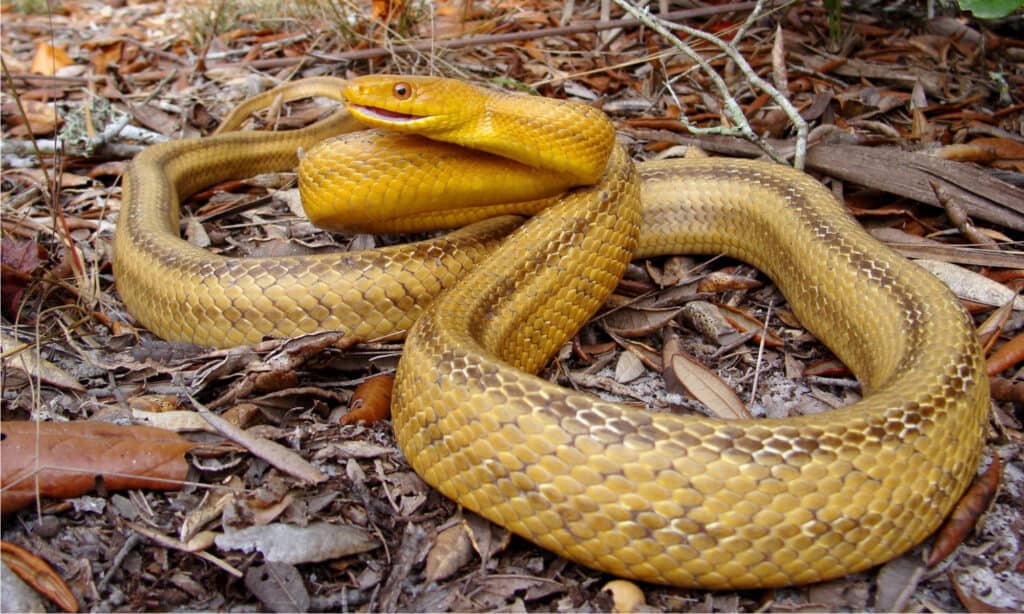
Snakes forcibly blow air through their nose and mouth to produce a hiss.
©Matt Jeppson/Shutterstock.com
Snakes hiss. That’s probably the first noise we think of. Hissing occurs when a snake forcibly blows air from its mouth and nose. It’s meant to scare away predators. An article in the Journal of Experimental Biology researched into whether snakes make different hisses according to their species. Still, they found little difference and no evidence to suggest it’s a form of communication. Basically, a snake’s hiss is an audible warning to back off quickly.
2. Rattling

A rattlesnake’s tail is formed from keratin.
©Harris Motion Photo/Shutterstock.com
Rattling is associated with rattlesnakes, but it’s not the only species that rattles its tail. Copperheads and cottonmouths do it too, but their lack of actual rattle means it’s a silent gesture.
The loose, hollow keratin scales (the same substance fingernails are made from) at the end of a snake’s tail click together and produce an unmistakable sound when the snake shakes and vibrates its tail. As a rattlesnake grows, its tail rattle gets bigger, and each shed adds another layer of keratin to its warning system. However, young rattlesnakes don’t have a rattle, and it takes two keratin layers to create one.
The distinctive rattle of rattlesnakes is pretty loud. It’s a clear signal that your presence is unwanted. Back away slowly!
3. Buzzing

Eastern Massasauga rattlesnakes produce a buzz.
©Ryan M. Bolton/Shutterstock.com
An eastern Massasauga rattlesnake shakes its butt like all rattlesnakes to produce a warning noise, but instead of a rattle, out comes a buzz! It’s comparable to a distressed bee or wasp and pretty distinctive. Again, this is a danger sign for predators that shows the snake is scared.
4. Rasping
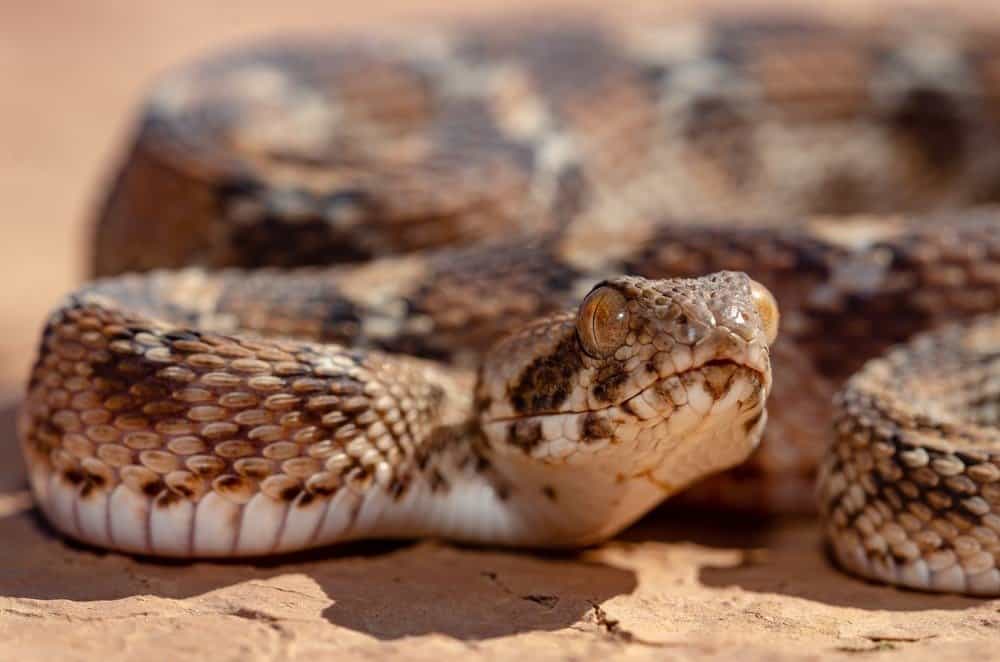
A saw-scaled viper rubs its rough scales to produce a warning buzz.
©Luis Montero de Espinosa/Shutterstock.com
Just like sandpaper on rough wood, snakes like Africa and Asia’s saw-scaled vipers create a rasping sound to warn off predators. Saw-scaled vipers don’t have the smooth scales we associate with snakes. Instead, they have rough-keeled scales with serrations and ridges. When scared or angry, these vipers move in an S shape and rub their textured scales to create a warning rasp.
5. Whistling
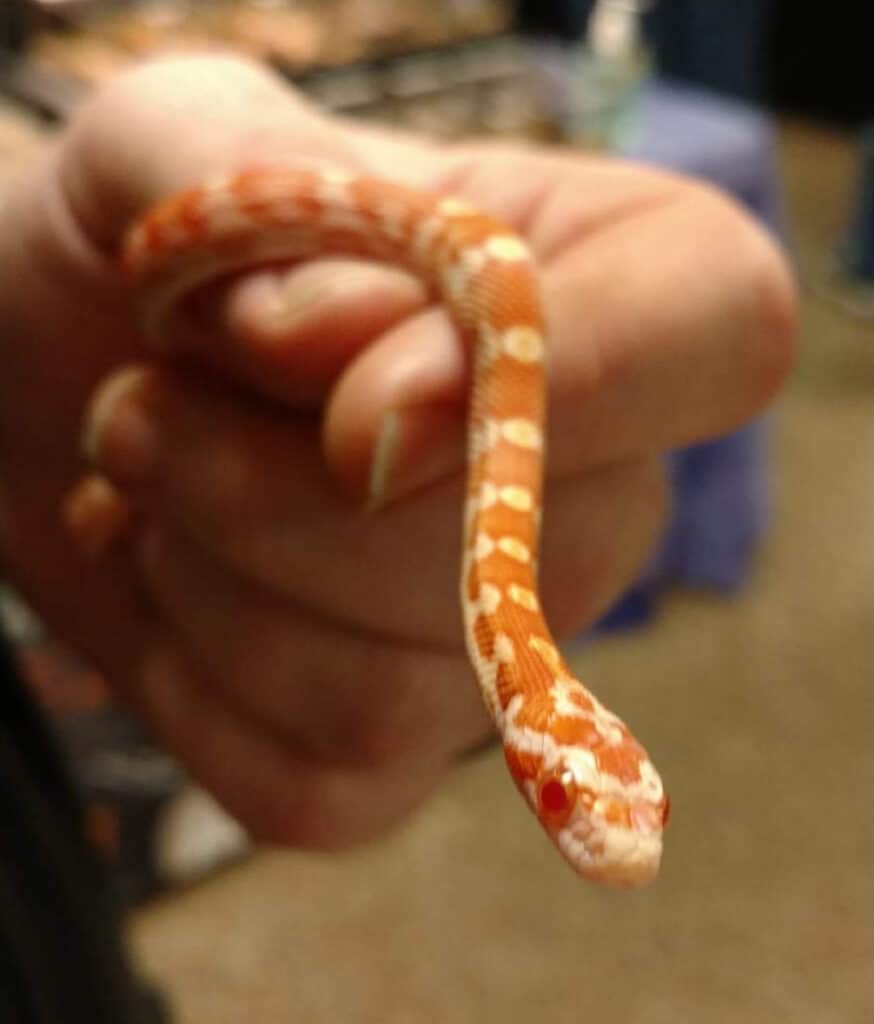
Corn snakes break the wind to warn predators off. It produces a whistling sound!
©iStock.com/Desiree Shepherd
Corn snakes, ball pythons, some vipers, Sonoran coral snakes, and western hook-nosed snakes can whistle. Pushing air through the cloacal vent (the vent in their back end) instead of their nose and mouth creates this whistling sound, so basically, the snake is breaking wind! It’s another danger sign that warns predators to back away, so unless it’s caused a laughing fit, it’s best to move on.
6. Growling
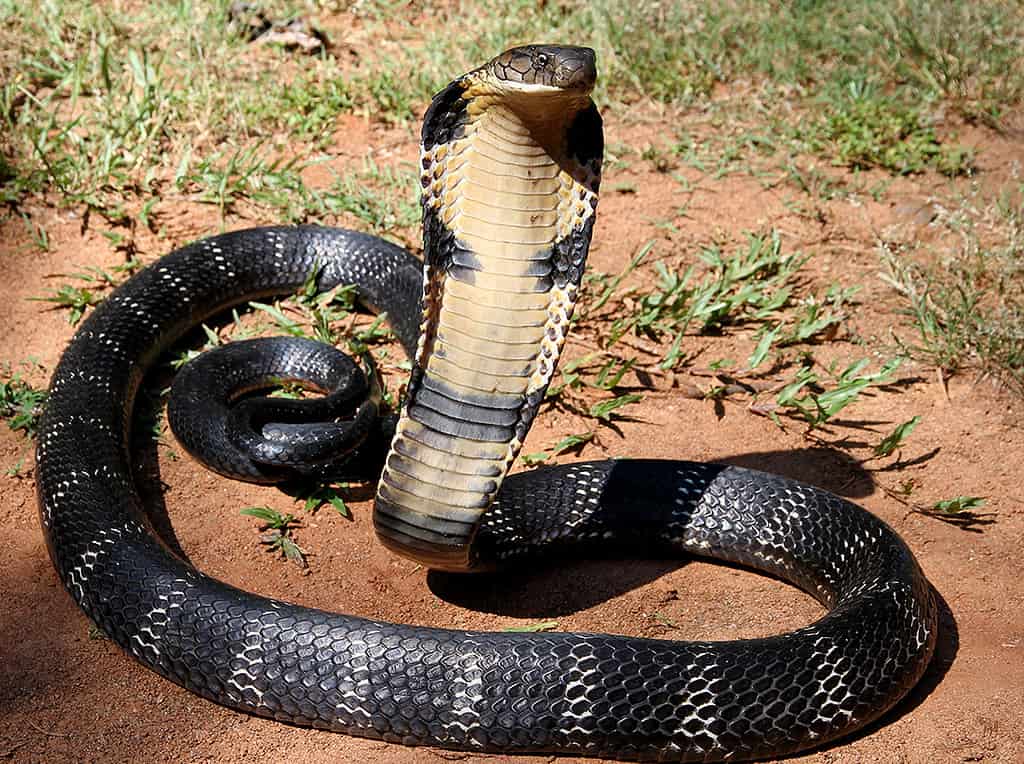
King cobras are the largest venomous snakes on Earth.
©Michael Allen Smith from Seattle, USA, CC BY-SA 2.0 – License
A growling snake is the stuff of nightmares, but king cobras want to keep us all awake at night. Called “king” because it can reach 13 feet long, this is the world’s largest venomous snake. It blows air through its mouthparts to create a vibrating cat-like growl that’s truly terrifying. King cobras are known for this nightmare fuel noise, but other large snakes can also growl.
7. Shrieking

Pine snakes have limited vocal cords that create a shrieking sound.
©Nathan A Shepard/Shutterstock.com
A shrieking snake? Surely not.
Well, yes. As well as hissing, farting, and growling snakes, let us introduce the pine snake (Pituophis melanoleucus). This is an unusual one because it actually has vocal cords of sorts. Pine snakes have a laryngeal septum. When they push air over it, what would be a hiss in other snakes becomes a pretty weird shrieking sound. It might sound odd, but it’s another clear warning to keep away and a danger sign for predators.
8. Calling
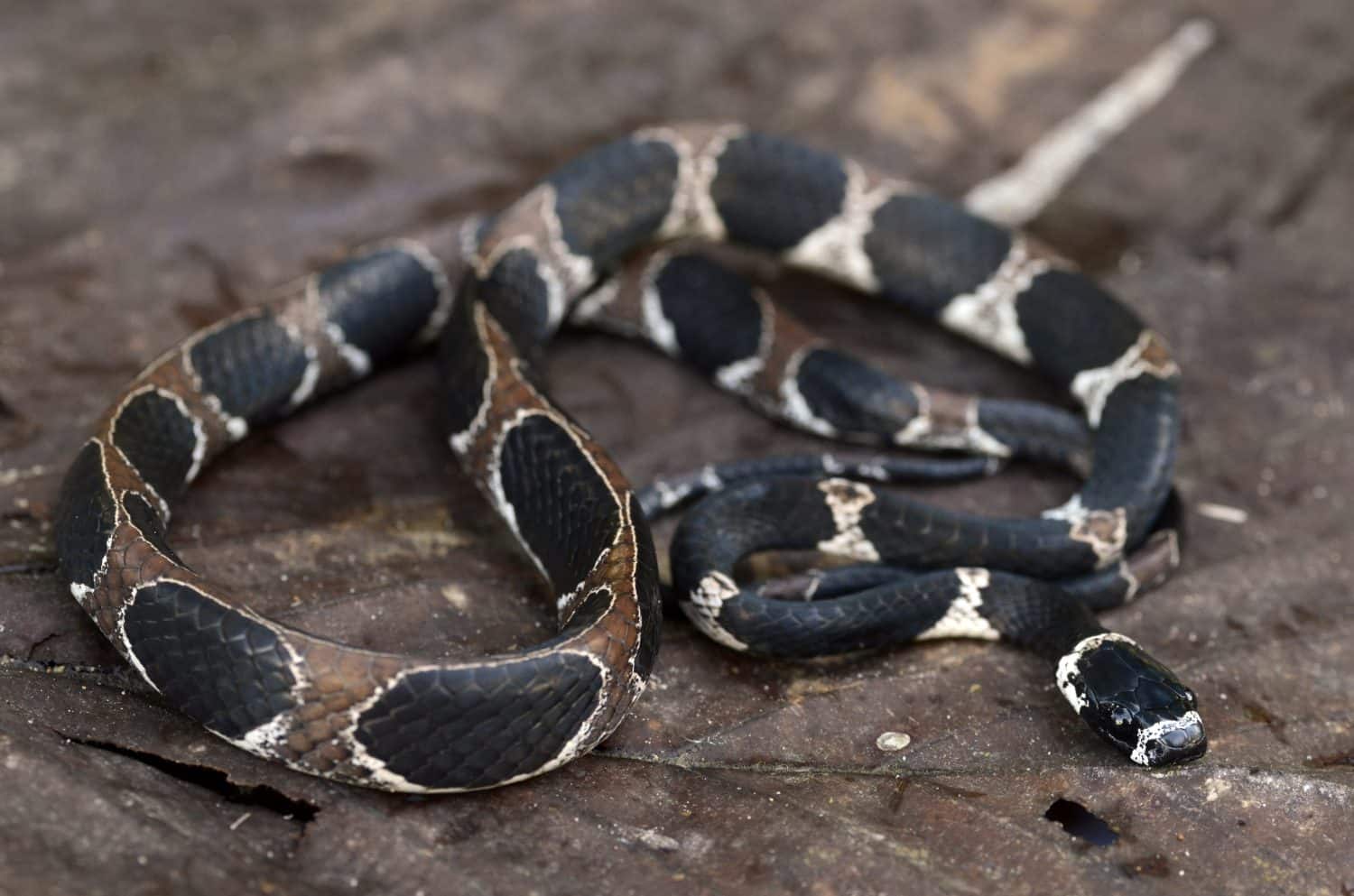
Catesby’s snail eater may imitate amphibians’ distress calls.
©Patrick K. Campbell/Shutterstock.com
So far, we’ve found snake noises mean danger for us, but this research suggests Brazil’s Catesby’s snail-eater may make a distress call.
Experts think this type of distress call mimics amphibian distress calls, which snakes imitate to attract prey. Their test subject snake made its call by blowing air through its mouth and nose. We’ve seen this technique produces hissing sounds, but to recreate a specific sound is new ground for snake researchers.
9. Wheezing and Clicking
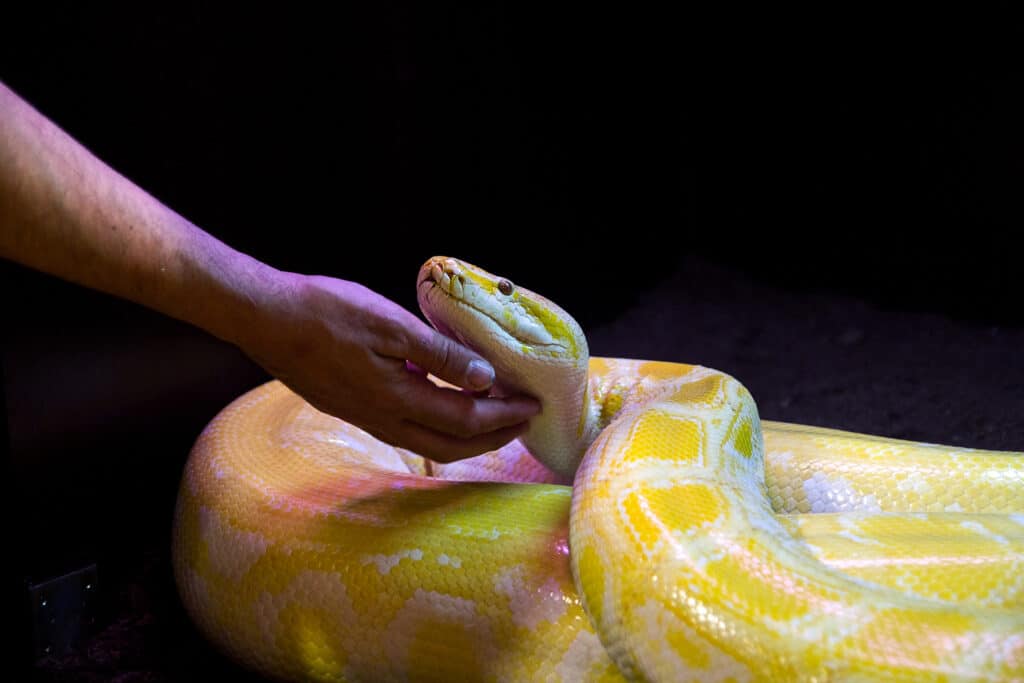
Pet snakes might make wheezing or clicking noises before they shed.
©Gonzalo Jara/Shutterstock.com
Snakes about to shed their skin have been observed making wheezing and clicking sounds. The sound lasts only a few days or until the shed is complete. However, if a pet snake makes these sounds outside its shedding period or for longer than a few days, it can indicate a respiratory infection or mouth rot. Other infection signs include open-mouth breathing, gurgling, loss of appetite, and nasal discharge.
10. Banging, Crashing, and Rustling
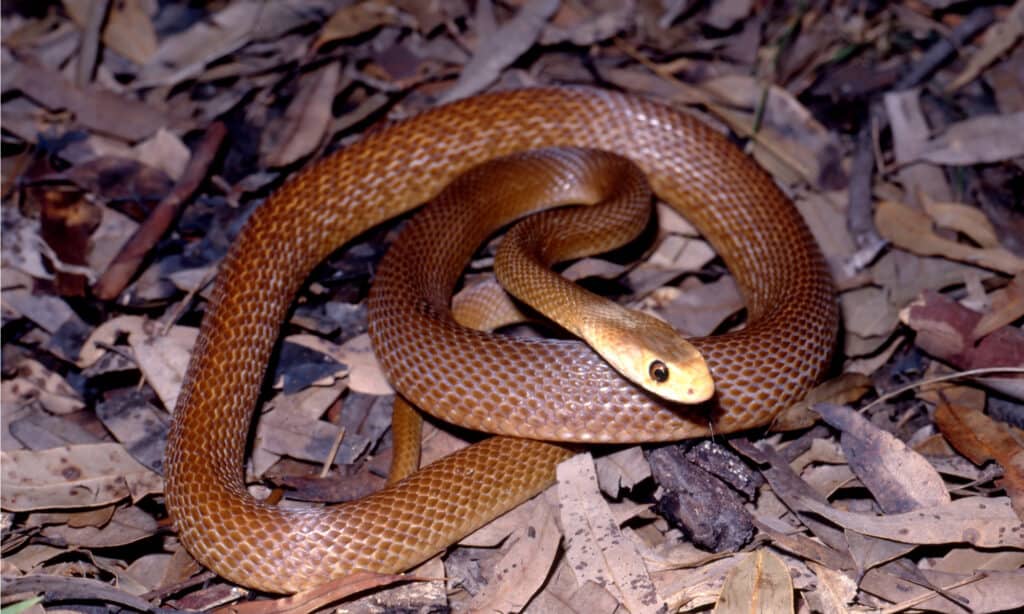
Snakes sometimes create rustling noises when they move through dry leaves.
©Ken Griffiths/Shutterstock.com
Bumps and crashes are not noises that snakes purposely make with their bodies but a result of knocking over objects. Although snakes are chiefly stealthy, they do sometimes knock over unstable objects or move through noisy dry leaves, dead grass, or sand.
Other Ways That Snakes Communicate
The majority of snakes don’t have vocal cords, so they use other ways to communicate. Here are four ways snakes communicate.
Extending their Height
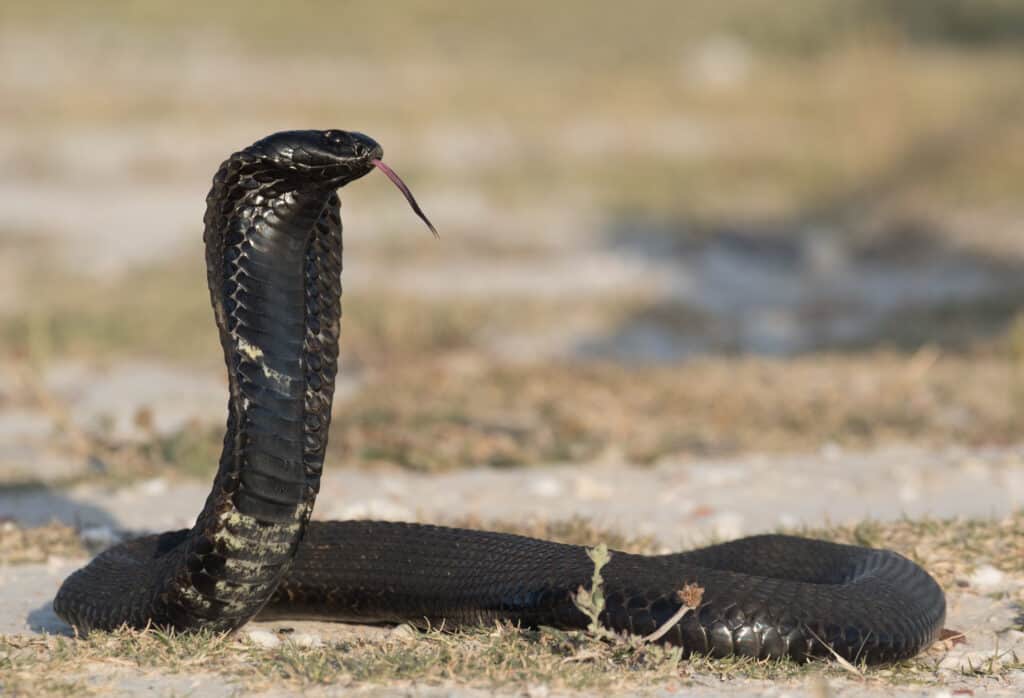
Cobras raise their hoods and upper bodies to warn off predators
©Andre Coetzer/Shutterstock.com
Cobras are probably the best example of raising height. These snakes can raise a third of their body length to look larger and intimidate predators.
Inflating Head
Again, cobras are good examples. A cobra can flare open a hood around their head with air sacs. It’s another ploy to look larger and scarier. It works!
Curling Up
Snakes protect their heads from predators by curling up and placing them inside their body’s scaly protection. This is a defensive move from a scared snake, but it doesn’t mean it’s game over. A scared snake is very dangerous.
Playing Dead
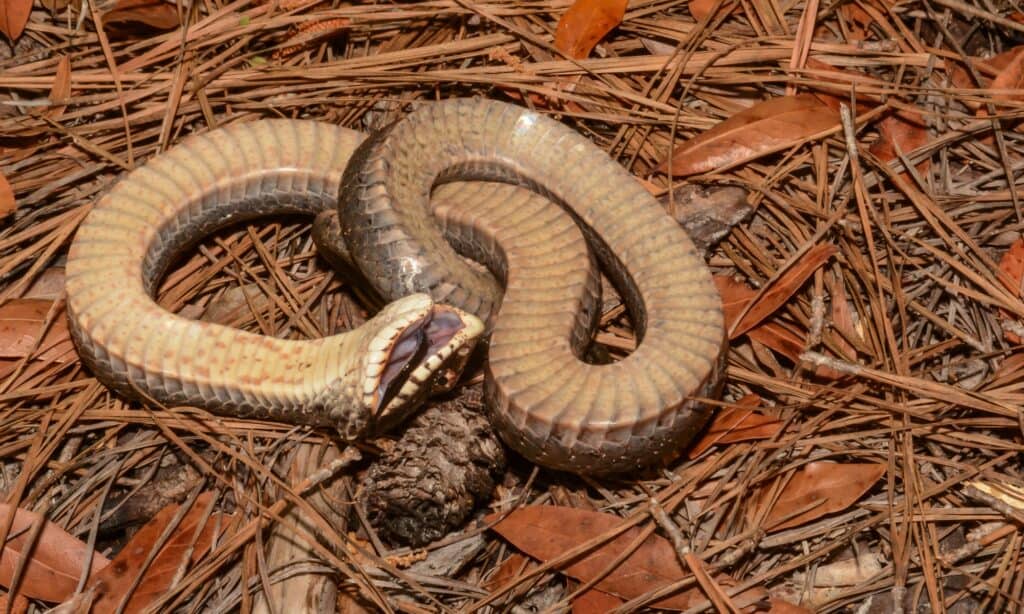
Eastern hognose snakes play dead so predators won’t eat them.
©iStock.com/JasonOndreicka
European grass snakes and hognose snakes are dramatic fellows that play dead to put predators off.
Unless it’s a carrion eater, predators won’t touch a dead animal. To make their performance memorable, these snakes also poop themselves! The smell increases the death performance with a scented angle.
Sounds That Mean Danger
So, out of all the snake sounds, which means danger?
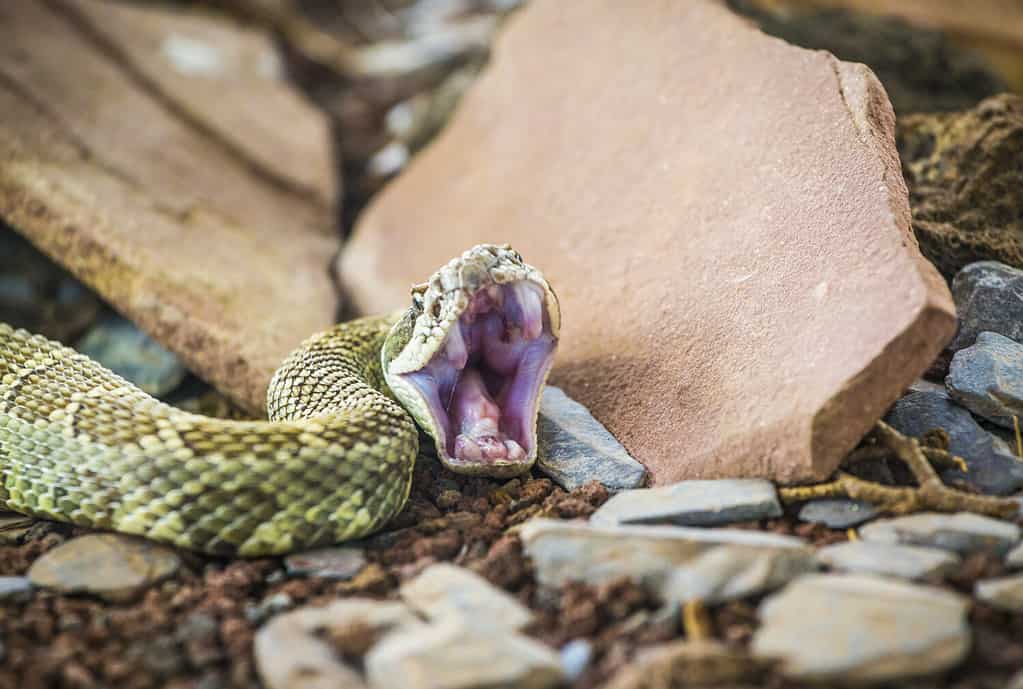
If you hear a snake sound, back away slowly.
©Clement Horvath/Shutterstock.com
Well, it’s most of them because snakes vocalize to warn predators. Unless the snake is ill or its body knocks an object over, it’s usually pretty quiet. In fact, being quiet helps snakes sneak up on their prey.
Let’s run down the sounds to see which means danger:
- Hissing: danger
- Rattle: danger
- Buzzing: danger
- Rasping: danger
- Whistles: danger
- Growling: danger
- Shrieking: danger
- Calling: possible mimic sound to tempt prey
- Wheezing and clicking: possible illness
- Crashing or rustling: accidental environmental noise
It’s pretty clear to see that when snakes make sounds, it usually spells danger for predators. Scared snakes strike humans, but they don’t hunt us, so moving away is generally sufficient to prevent a dangerous situation.
When faced with a noisy snake, back away slowly, do not make sudden jerky movements, and if you get bitten, seek medical attention.
The photo featured at the top of this post is © Brett Hondow/Shutterstock.com
Discover the "Monster" Snake 5X Bigger than an Anaconda
Every day A-Z Animals sends out some of the most incredible facts in the world from our free newsletter. Want to discover the 10 most beautiful snakes in the world, a "snake island" where you're never more than 3 feet from danger, or a "monster" snake 5X larger than an anaconda? Then sign up right now and you'll start receiving our daily newsletter absolutely free.
Thank you for reading! Have some feedback for us? Contact the AZ Animals editorial team.






